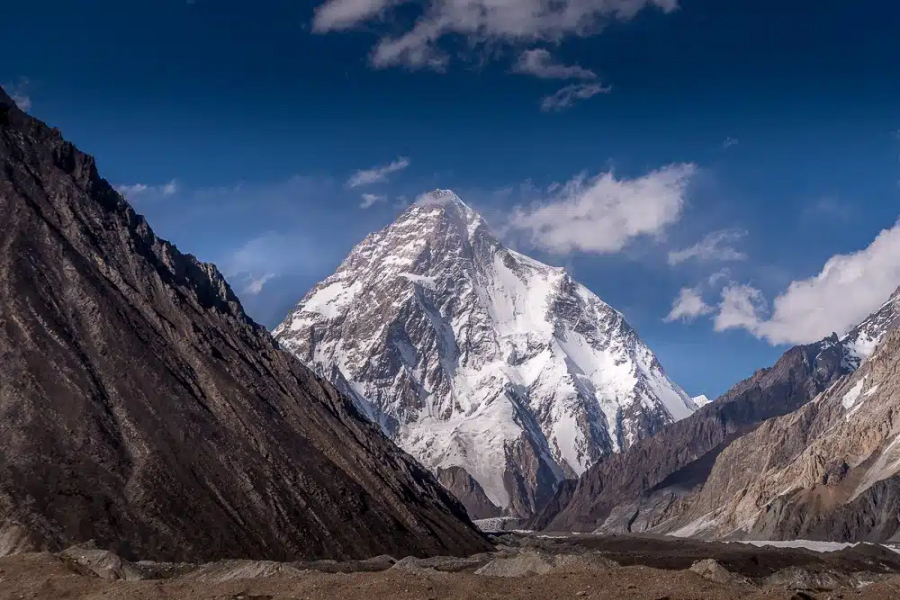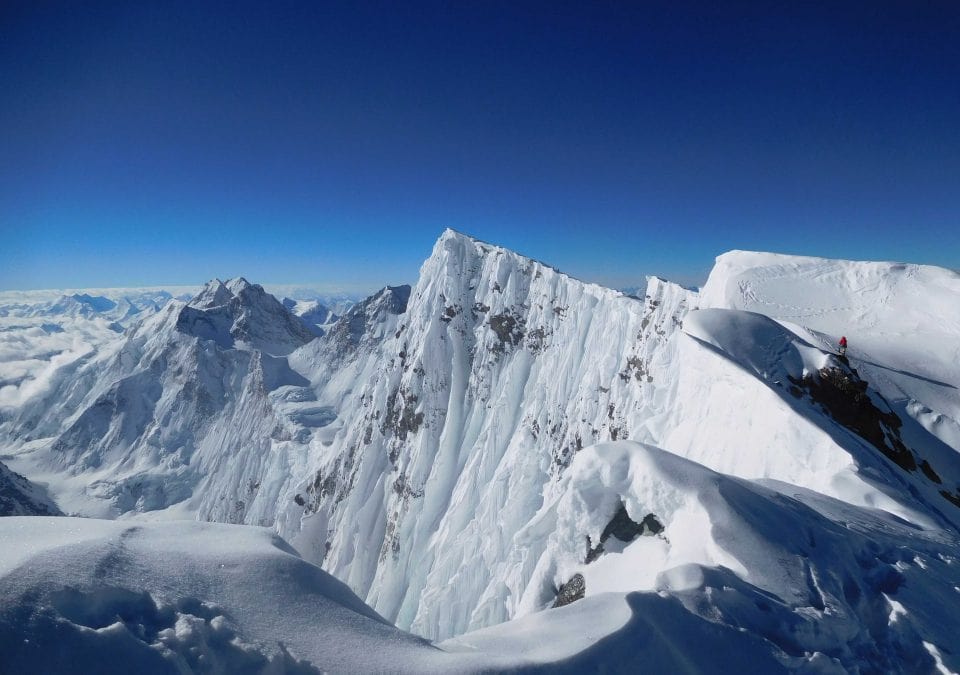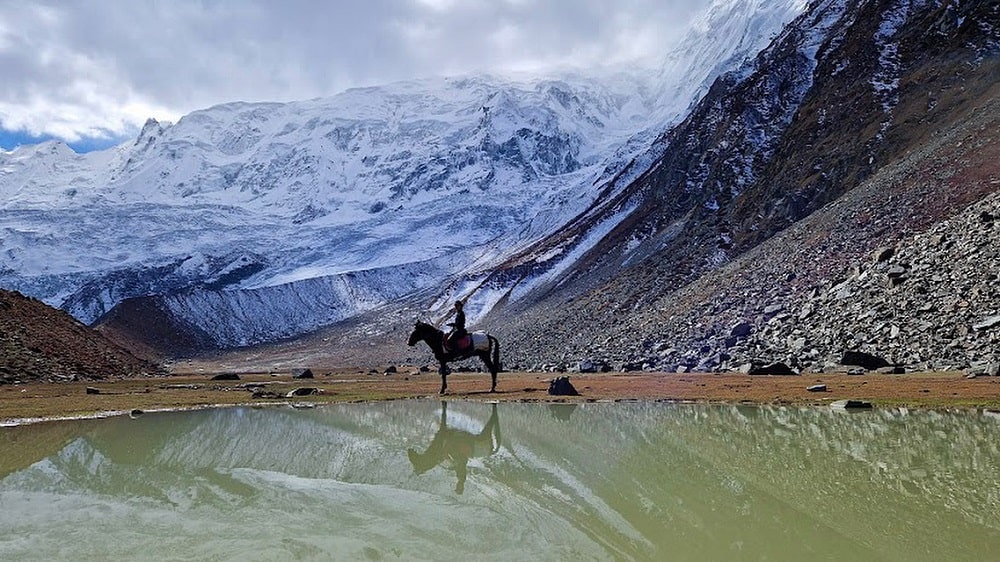Introduction:
Pakistan, with its diverse and majestic mountainous landscapes, has firmly established itself as a premier destination for mountaineers seeking adventure and challenge. Home to some of the world’s highest peaks, such as the renowned K2 and the formidable Nanga Parbat, the Himalayan and Karakoram ranges in Pakistan offer a thrilling experience for both novice and seasoned climbers. In this exploration of the top mountaineering destinations, we delve into the allure of these towering giants, including lesser-known gems that await discovery. The cultural richness surrounding these peaks adds an extra layer of fascination to the mountaineering experience. For a comprehensive list of mountains in Pakistan and more information on mountaineering in the region, you can refer to Mountaineering in Pakistan and Mountains of Pakistan – List of Mountains of Pakistan.
 FAQS:
FAQS:
Where is the best place to do mountaineering?
The best place for mountaineering depends on individual preferences, skill levels, and the type of experience one seeks. However, Pakistan, with its Himalayan and Karakoram ranges, is renowned as a top destination for mountaineering. Peaks like K2 and Nanga Parbat offer challenging ascents for experienced climbers, while the Hunza Valley serves as a gateway to various mountainous adventures, providing a stunning backdrop for treks and climbs.
Which is the easiest 8000m peak in Pakistan?
Among the 8000m peaks in Pakistan, Gasherbrum II (also known as K4) is often considered to be a relatively more straightforward ascent compared to other giants like K2 and Nanga Parbat. While it still poses significant challenges due to its altitude and demanding conditions, Gasherbrum II attracts climbers aiming for their first 8000m summit. Its accessibility and slightly less technical nature contribute to its reputation as a comparatively “easier” 8000m peak.
What is the highest mountain range in Pakistan?
The highest mountain range in Pakistan is the Karakoram Range. Renowned for its rugged and formidable peaks, the Karakoram Range is part of the more excellent Himalayan mountain system. It includes some of the world’s highest peaks, such as K2, Broad Peak, and Gasherbrum I and II, making it a prime destination for mountaineers seeking challenging ascents and unparalleled natural beauty.
How many peaks in Pakistan are higher than 7000?
Pakistan is home to numerous peaks exceeding 7000 meters in height. While the exact count may vary, the country boasts an impressive number of these high-altitude giants. Peaks like K2, Nanga Parbat, and Gasherbrum I and II stand prominently among those exceeding the 7000m mark. The Karakoram Range, in particular, hosts a significant concentration of these majestic peaks, offering a playground for severe mountaineers and climbers.
Himalayan and Karakoram Ranges:
The Himalayan and Karakoram ranges, standing tall and proud, define the breathtaking topography of Pakistan. The Himalayas, known for their serene beauty, coexist with the rugged and formidable Karakoram Range, creating a mesmerizing fusion of landscapes. The unique features of each range provide a variety of challenges for mountaineers, attracting adventurers from around the globe.
K2: The Crown Jewel:
Among the giants that adorn the Pakistani landscape, K2 stands as the crown jewel. As the second-highest peak globally, K2 presents a formidable challenge, earning its reputation as the “Savage Mountain.” Climbers are drawn to its sheer difficulty, with the ascent giving an unparalleled test of skill, endurance, and determination. Historical triumphs and tragic tales intertwine, creating a narrative as captivating as the peak itself.
Nanga Parbat: The Killer Mountain
Nanga Parbat, known as the “Killer Mountain,” is notorious for its extreme difficulty and high fatality rate. As the ninth-highest peak globally, it lures adventurers with its deadly charm. The challenges of Nanga Parbat extend beyond physical prowess, demanding a profound respect for the mountain and a keen understanding of its treacherous conditions.

Broad Peak: The 14th Highest Peak
Nestled in the Karakoram Range, Broad Peak claims its place as the 14th-highest peak in the world. Though overshadowed by its more renowned neighbours, Broad Peak offers a distinct set of challenges and rewards for mountaineers. Its pyramid-shaped summit attracts those seeking a less crowded but equally exhilarating climb.

Rakaposhi and Gasherbrum Peaks:
Rakaposhi and the Gasherbrum Peaks, each with its unique characteristics, contribute to the rich mountaineering tapestry of Pakistan. Rakaposhi, known for its stunning beauty, presents a challenging yet rewarding ascent. Meanwhile, the Gasherbrum Peaks, with their impressive stature, offer a range of climbing experiences, from the technically demanding Gasherbrum I to the more accessible Gasherbrum II.

Hidden Gems: Lesser-Known Peaks
While K2 and Nanga Parbat may dominate headlines, Pakistan boasts numerous lesser-known peaks waiting to be explored. These hidden gems offer a quieter, more intimate mountaineering experience, providing a chance to connect with nature in its purest form. From the serene beauty of Masherbrum to the mystique of Ultar Sar, these lesser-explored peaks showcase the diverse offerings of Pakistan’s mountains.
Hunza Valley: Gateway to Adventure
The enchanting Hunza Valley, nestled in the embrace of the Karakoram Range, serves as the gateway to many mountaineering adventures. Its picturesque landscapes, vibrant culture, and warm hospitality make it a favourite among trekkers and climbers. The valley not only provides a base for expeditions but also offers a cultural experience, allowing adventurers to immerse themselves in the traditions of the local communities.
Climbing Seasons in Pakistan:
Understanding the climbing seasons is crucial for planning a successful expedition in Pakistan. The summer months, from June to August, offer the best weather conditions for most peaks. However, each region and peak may have its unique window of opportunity. Winter expeditions, while rare, attract seasoned climbers looking for a different set of challenges and a quieter, more serene atmosphere.
Local Guides and Sherpas: Pillars of Success
The success of any mountaineering expedition in Pakistan often hinges on the expertise and guidance of local guides and Sherpas. These seasoned professionals possess an intimate knowledge of the terrain, weather patterns, and cultural nuances. Their invaluable assistance ensures a safer and more enjoyable climbing experience, contributing to the overall success of the adventure.
Documentary Wonders: Films on Pakistani Mountaineering
The mesmerizing beauty and challenges of Pakistani mountaineering have been captured in various documentaries and films. From gripping accounts of perilous ascents to breathtaking visuals of snow-covered peaks, these films provide armchair adventurers with a glimpse into the world of high-altitude climbing. Notable documentaries such as “The Summit” and “K2: Siren of the Himalayas” offer insights into the triumphs and tribulations of climbers in Pakistan.
Ecotourism Initiatives in Mountainous Regions:
As mountaineering gains popularity, there is a growing emphasis on sustainable and responsible tourism in the mountainous regions of Pakistan. Ecotourism initiatives aim to preserve the pristine environment, promote conservation efforts, and empower local communities. By participating in responsible tourism practices, adventurers can contribute to the preservation of these natural wonders for future generations.
Mountaineering Gear and Preparation:
Proper gear and preparation are paramount for a successful mountaineering expedition in Pakistan. The extreme conditions and high altitudes require climbers to be equipped with the appropriate clothing, footwear, and safety gear. Adequate physical training, acclimatization, and knowledge of emergency procedures are equally essential. Being well-prepared ensures a safer and more enjoyable experience in the challenging terrain.
Historical Expeditions and Pioneering Climbers:
The history of mountaineering in Pakistan is punctuated with awe-inspiring expeditions and pioneering climbers who pushed the boundaries of human achievement. From the first ascent of K2 by an Italian team in 1954 to Reinhold Messner’s solo ascent of Nanga Parbat in 1978, these historical feats have left an indelible mark on the world of mountaineering. Studying these achievements provides insight into the evolution of climbing techniques and the indomitable spirit of mountaineers.
Culinary Delights: Food Adventures in Mountain Villages:
Exploring the mountain villages of Pakistan is not only a journey into nature but also a culinary adventure. Local cuisines, infused with flavours unique to the region, offer a delicious respite for tired climbers. Traditional dishes such as chapshuro, mantu, and apricot-based delicacies provide a taste of the rich culinary heritage that thrives in the mountain villages.
Postcard-Perfect Landscapes: Photographic Opportunities:
The landscapes of Pakistan’s mountaineering destinations are a photographer’s dream, offering postcard-perfect views at every turn. From the towering peaks against clear blue skies to the play of light and shadows on snow-covered slopes, every moment is an opportunity to capture the raw beauty of the mountains. Photographers, amateur and professional alike, find inspiration in the ever-changing scenery.
Hidden Gems: Lesser-Known Peaks:
Venturing off the beaten path reveals Pakistan’s hidden gems—lesser-known peaks that may lack the fame of K2 but are equally captivating. These untouched summits offer a more intimate mountaineering experience away from the crowds. From the tranquil beauty of Masherbrum to the mystical charm of Ultar Sar, these lesser-explored peaks beckon adventurers to uncover the undiscovered wonders of Pakistan’s mountainous terrain.
Hunza Valley: Gateway to Adventure:
Situated amidst the grandeur of the Karakoram Range, the Hunza Valley stands as a gateway to unparalleled adventure. Beyond its stunning landscapes, the valley serves as a strategic base for mountaineering expeditions. The welcoming atmosphere of Hunza, coupled with its rich cultural heritage, makes it not just a starting point for climbs but an integral part of the mountaineering experience, offering a unique blend of nature and culture.
Climbing Seasons in Pakistan:
Choosing the right time for a mountaineering expedition in Pakistan is crucial. Different regions and peaks have distinct climbing seasons. Generally, the summer months from June to August provide the best weather conditions for most climbs. However, understanding the seasonal variations and peak-specific nuances ensures a safer and more enjoyable journey through the challenging terrains of Pakistan’s mountains.
Local Guides and Sherpas: Pillars of Success
The success of any mountaineering venture in Pakistan is often attributed to the expertise of local guides and Sherpas. These seasoned professionals possess an intimate knowledge of the terrain, weather patterns, and cultural intricacies. Their role extends beyond navigation; they become mentors, adding a layer of cultural immersion to the climb. Recognizing and respecting the contributions of these local guides is essential for a successful and culturally enriching mountaineering experience.
Documentary Wonders: Films on Pakistani Mountaineering:
For armchair adventurers and climbing enthusiasts alike, documentaries and films on Pakistani mountaineering provide a window into the challenges and beauty of the region. Gripping narratives and breathtaking visuals in films like “The Summit” and “K2: Siren of the Himalayas” capture the essence of the mountainous landscapes and the indomitable spirit of those who dare to conquer them.
Ecotourism Initiatives in Mountainous Regions:
As the popularity of mountaineering grows, so does the emphasis on sustainable and responsible tourism in Pakistan’s mountainous regions. Ecotourism initiatives aim to preserve the pristine environment, promote conservation efforts, and empower local communities. Travelers are encouraged to participate in these initiatives, contributing to the preservation of natural wonders while fostering a positive impact on local communities.
Mountaineering Gear and Preparation:
Preparing for a mountaineering expedition in Pakistan requires meticulous planning and the right gear. The extreme conditions and high altitudes demand specialized equipment, suitable clothing, and safety gear. Adequate physical training, acclimatization, and familiarity with emergency procedures are equally crucial. This comprehensive guide ensures that mountaineers are well-prepared for the challenges that await them in Pakistan’s formidable mountain ranges.
Historical Expeditions and Pioneering Climbers:
The history of mountaineering in Pakistan is a saga of triumphs, tragedies, and pioneering climbers who etched their names in the annals of exploration. From the first ascent of K2 in 1954 to Reinhold Messner’s solo climb of Nanga Parbat in 1978, each historical expedition contributes to the evolving narrative of mountaineering. These feats not only showcase human endurance but also mark milestones in the evolution of climbing techniques and strategies.
Culinary Delights: Food Adventures in Mountain Villages:
Exploring the mountain villages of Pakistan offers not just a journey into nature but also a culinary adventure. The local cuisines, enriched with flavours unique to the region, present a delightful respite for tired climbers. Traditional dishes such as chapshuro, mantu, and apricot-based delicacies provide a taste of the rich culinary heritage that thrives in the mountain villages, adding a flavorful dimension to the overall mountaineering experience.
Postcard-Perfect Landscapes: Photographic Opportunities:
Every twist and turn in Pakistan’s mountaineering destinations unveils postcard-perfect landscapes, a paradise for photographers. From the majestic peaks against azure skies to the interplay of light and shadow on snow-covered slopes, every moment is a photographic opportunity. Whether professional or amateur, photographers find inspiration in the ever-changing scenery, capturing the raw beauty of the mountains in timeless frames.
Conclusion:
In conclusion, the top mountaineering destinations in Pakistan beckon adventurers with their majestic peaks, challenging ascents, and rich cultural tapestry. From the formidable K2 to the hidden gems awaiting discovery, each mountain tells a unique story of triumph, challenge, and the enduring spirit of exploration. As the world looks to Pakistan for its next mountaineering adventure, the allure of these peaks continues to inspire climbers to reach new heights, both literally and metaphorically. Mountains of Pakistan – List of Mountains of Pakistan.

